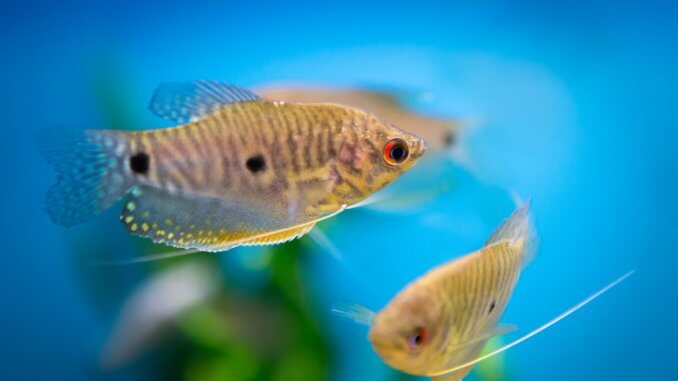
The gourami fish group belongs to the Osphronemidae family. Gouramis are freshwater fish native to Southeastern Asia and come in a wide range of colors and patterns.
Gouramis are popular with fish keepers due to their gentle nature, affordability, and hardiness.
There are more than 90 different types of gouramis.
Resources: Buy a gourami, Wikipedia, gourami social behavior
Gouramis thrive in low-oxygenated water in the wild. The fish can breathe in oxygen from the air because gouramis have a unique supplemental breathing structure, the labyrinth organ.
TABLE OF CONTENTS
Gourami Facts & Overview
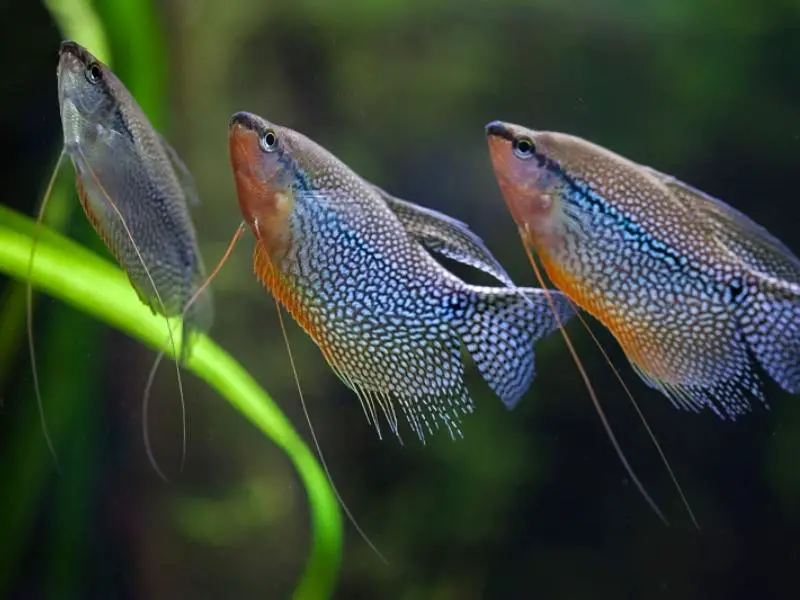
| Scientific family: | Osphronemidae, Polyacanthidae |
| Common names: | Gourami, gouramis, gouramies |
| Distribution: | Asia and Southeast Asia – from Korea to Indonesia and Pakistan |
| Size: | 3.5–28 inches, depending on species |
| Life expectancy: | 3–8 years |
| Color: | Blue, orange, yellow, red, brown; various stripes and patterns |
| Diet: | Omnivore |
| Temperament: | Generally peaceful |
| Minimum tank size: | 10 gallons minimum |
| Temperature: | 72–82°F (22–27°C) |
| pH: | 6.0–8.0 |
| Hardness: | 4–15 dGH |
| Care level: | Moderate |
| Breeding: | Mouthbrooders, bubble nests |
Origin & Distribution
The name “gourami” derives from the Indonesian language and was first used in the late 19th century.
Gouramis are common in the wild and are primarily found in Eastern and Southeast Asia, including Indonesia, Cambodia, Thailand, Malaysia, Vietnam, India, Pakistan, and Korea.
Types of Gouramis & Appearance
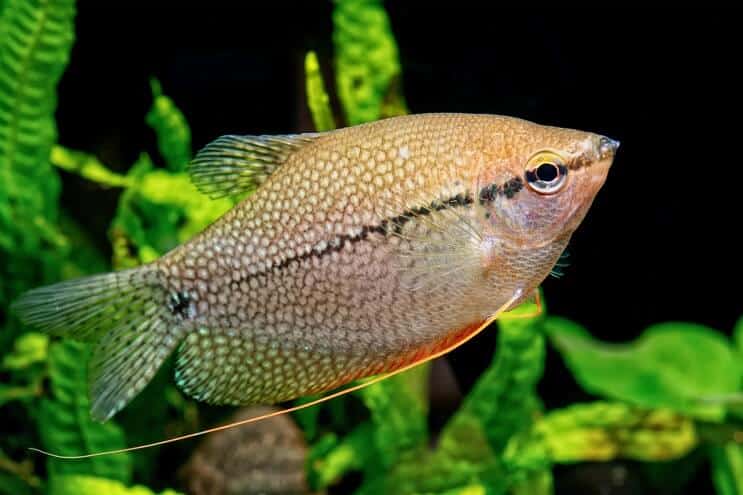
Today, there are more than 90 recognized species of gourami.
- Giant gourami: Pale with yellow-hued scales and distinct silver stripes, with a pointed snout and a flat head shape. Giant gouramis can grow up to 20 inches long.
- Opaline gourami: Blue with dark stripes across its entire body. Light spots on its fins and tail. Opaline gouramis can grow up to six inches long.
- Gold gourami: Unique gold-hued scales and striped patterning. Fins are large and round. These fish can grow up to six inches.
- Moonlight gourami: Silver-hued iridescent green scales, with a slope-shaped head and flat body. Fins are translucent and iridescent. Moonlight gouramis grow up to five inches.
- Blue gourami: Blue with marble-like patterns. Two distinct dark spots on the body – one located at the center, the other near the tail. Pectoral fins are long and thin. The fish grows up to six inches.
- Pearl gourami: Most distinguishable feature is the fish’s pearl-like spots. The fish also has a black line running across its body. Pearl gouramis grow up to five inches.
- Dwarf gourami: One of the smallest gouramis; comes in several color morphs. Narrow, compressed body with round fins.
- Kissing gourami: A distinctive mouth that protrudes outward — gives the fish a permanent “pout.” Short dorsal and anal fins. Kissing gouramis grow up to 12 inches.
- Samurai gourami: Female samurai gouramis are vibrant green with red and green vertical stripes. Males are duller than females and have brown-reddish tones. Samurai gouramis grow up to two inches long.
- Licorice gourami: Silver or brown scales with black vertical stripes. Fins and belly have green and red shades. These fish grow up to 2.5 inches.
- Honey gourami: Male honey gouramis have bright orange coloration, while female gouramis are silver or light yellow with a brown horizontal line. Ventral fins are needle-like. These fish grow up to three inches.
- Sparkling gourami: Brown with vibrant spots across the entire body. Markings and patterns vary. Fins have a dark orange tint. Sparkling gouramis grow up to 1.6 inches long.
Gourami Behavior & Compatibility
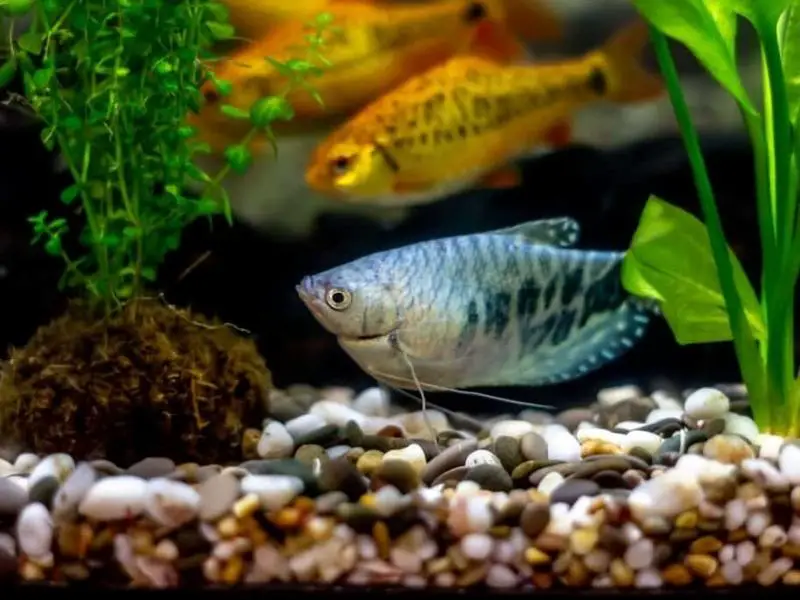
Gouramis are peaceful, docile fish that do well in community tanks. They swim in the top and middle levels of the tank and often swim to the surface to breathe air.
These fish are slow-moving, and shouldn’t be kept with fast-moving fish or fin-nippers. Although gouramis are hardy, it takes time for the fish to become accustomed to new environments.
Certain gourami species, like the gold gourami and kissing gourami, are more aggressive than others, and should only be kept with fish that match their attitude.
Other gouramis, such as samurai gouramis, are timid and spend most of their time at the bottom of the tank. Ample hiding spots should help these fish feel safe and at home.
Gouramis turn pale and dull when stressed. Appropriate tank parameters, suitable tankmates, and a nutritious diet keep these fish happy and healthy.
Male vs Female Gouramis
Female gouramis are social and get along well with other females. The fish do best in groups of four or more. However, male gouramis need to be kept separate, as the fish can be aggressive and territorial with other males.
Chasing, biting, and mouth fighting are all signs of aggression. Ensuring the tank size is large enough to house the fish will help prevent aggressive behavior.
Tank Mates
Gouramis are compatible with most similar-sized, peaceful species. Avoid boisterous or fin-nipping fish, such as bettas and tiger barbs. Ideal tank mates include:
- Gouramis: Female gouramis appreciate the company of their own kind. Male gouramis shouldn’t be kept together unless the tank is large enough to provide each fish its own personal space. Ensure there are more females than males (one male for every three females) in the tank to prevent conflict.
- Corydoras: These bottom-dwelling fish are peaceful and enjoy foraging. Corydoras grow up to 2.5 inches and do best in groups of five or more.
- Danios: These hardy fish are docile, easy to care for, and thrive in the same tank conditions as gouramis.
- Rasboras: Rasboras are peaceful and social, but can be timid. These qualities make rasboras good tankmates for shy gouramis, like samurai gouramis.
- Tetras: Most tetra species are docile. These small fish make good tankmates for smaller species of gourami, such as the sparkling gourami and samurai gourami. Tetras are mid-dwellers and thrive in groups of six or more.
Gourami Tank Setup
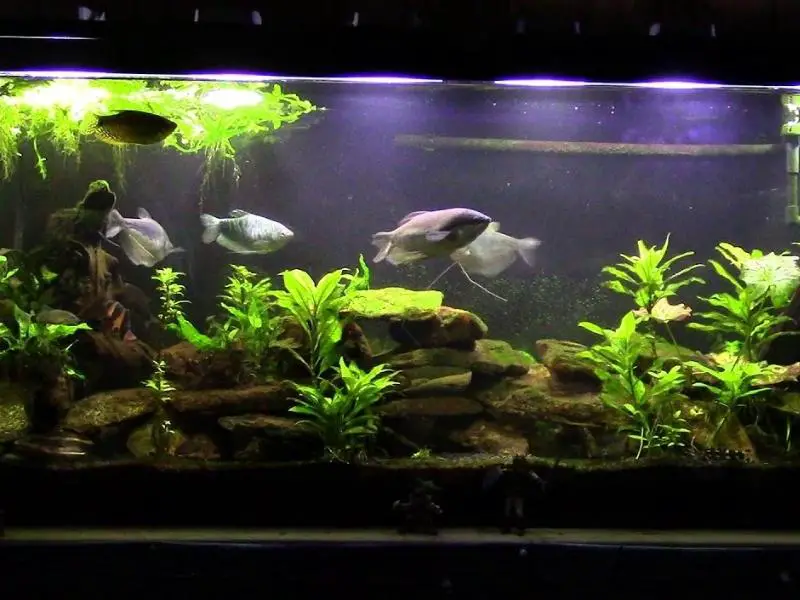
Gouramis have a hardy nature and are easy to care for. In the wild, gouramis live in densely-vegetated, slow-moving water. Replicating these conditions will allow gouramis to thrive.
Tank Size
The ideal tank size for gouramis depends on the type of gourami. For small gouramis, a 20-gallon tank is sufficient, but giant gouramis will need at least a 200-gallon tank.
Increase the tank size whenever you add new fish. Community tanks with small gouramis should hold 40 gallons or more.
Opt for an elongated tank. Gouramis often swim to the surface for air, and an elongated tank shape allows the fish to do this easily. The tank must have a secure lid because gouramis are known to jump out of tanks.
Water Temperature/Hardness
Gouramis can tolerate most water conditions. However, gouramis do best in water temperatures between 72°F and 82°F. Water should be neutral or slightly acidic (pH 6.0 to 8.0), with a hardness of 4 to 15 dGH.
Keep the water temperature consistent to prevent gouramis from becoming stressed or sick. The fish’s labyrinth organ can become damaged with inconsistent water temperatures.
Regular 25% water changes should help keep the tank clean of debris and waste. Use a filtration system that doesn’t generate a strong flow, because gouramis are slow swimmers.
Decoration
Gouramis enjoy exploring and need lots of places to hide. Set up hiding spots with caves, foliage, floating plants, and driftwood. However, gouramis eat plants, so you should add resilient plants to the tank, like Java fern and anacharis.
Lighting should be moderate and switched off at night to allow the gouramis to rest. Sand and gravel are suitable substrate options. Opt for a dark-colored substrate to let the gourami’s colors shine through. Wash substrate thoroughly before adding to the tank to prevent cloudiness.
Care
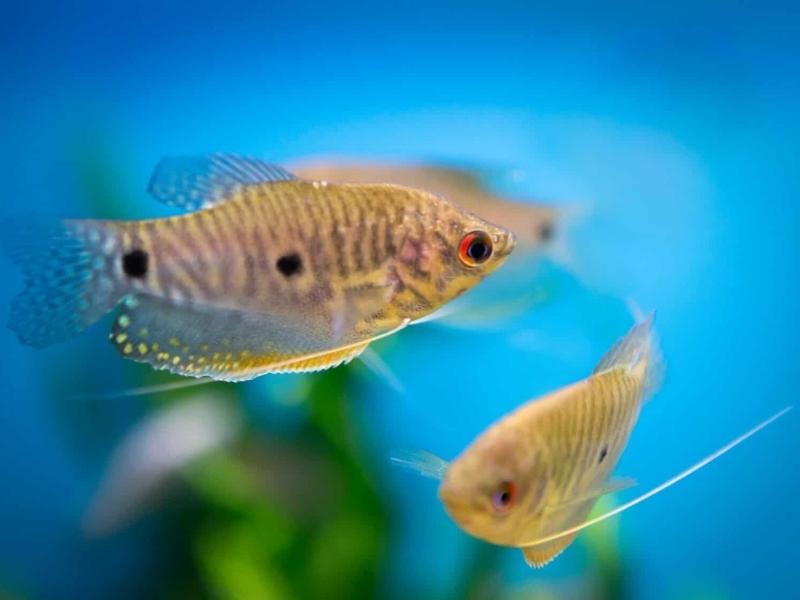
Gouramis are easy to care for because of the fish’s hardy nature and peaceful temperament. Ideal water parameters, an appropriate diet, and a spacious tank help these fish to live happy and long lives.
Most of the health issues that affect gouramis can be avoided by keeping the water clean and their environment stress-free. Breeding these fish is easy, but certain gourami species make bubble nests, which require additional care.
Diet & Feeding
Gouramis are omnivores that eat larvae, small insects, and algae in the wild. These fish aren’t picky eaters and will eat most foods, including flakes, pellets, and live foods like brine shrimp and glass worms.
Feed gouramis two to three times daily. Ensure the food is small enough to fit into the fish’s mouth, and only give the fish an amount that can be eaten within two to three minutes. Gouramis can be fed green vegetables, such as zucchini, occasionally.
Disease
Gouramis rarely get sick if properly cared for. However, gouramis are prone to diseases that typically affect freshwater fish, like fin rot and ich. Common signs of illness include dull scales, a change in appetite, and a lack of activity.
Fin rot: This illness causes fin or tail decay. Keeping the tank clean and the water parameters stable will help prevent fin rot.
Ich: This disease is caused by the parasite Ichthyophthirius multifiliis. The fish develops white spots on its body. Ich occurs when water conditions are poor or the fish is stressed.
Hole in the head disease: This disease causes lesions on the head. These lesions spread and become more prominent over time. While the cause of hole in the head disease isn’t clear, many contribute it to the parasite Hexamita. Other possible causes include poor water quality, stress, and poor nutrition.
Here are a few more diseases that could affect gouramis:
- Fish fungus
- Dropsy
- Swim bladder disease
Breeding Gouramis
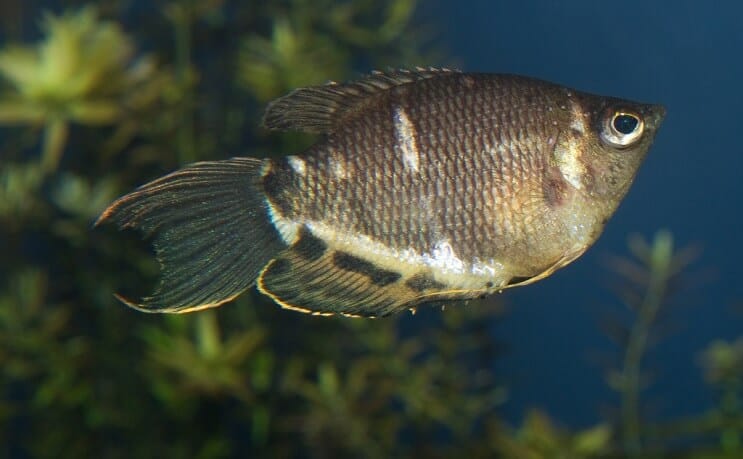
Gouramis are egg-layers and are generally easy to breed. Many gourami species are bubble nest builders.
Encourage breeding by feeding the fish highly nutritious live food and slowly increasing the water temperature to around 82°F. Ensure water is clean and has ideal parameters.
Set up a separate 20-gallon breeding tank with similar water parameters to the original tank, to give the fry the best chance of success. Use a gentle filtration system, like a sponge filter, that won’t suck in the fry or generate strong currents.
If the gourami is a bubble nest builder, add floating plants or decorations at the surface. This will allow the male to easily set up the nest.
Gouramis display impressive courting rituals, including circling, beating tails, and hugging. Female gouramis become plump when the fish are carrying eggs. Most females lay between 300 and 600 eggs. The spawning session can last for several hours.
Remove the female immediately once the fish has laid its eggs. The male gourami will begin guarding the eggs and can be aggressive toward the female. The eggs will hatch within three days. Feed gourami fry baby brine shrimp or daphnia.
Should You Get a Gourami for Your Aquarium?
Gouramis are beautiful, colorful fish that come in many different sizes and colors, each with its own personality and specific set of requirements.
They are hardy and relatively easy to take care of, provided you understand and can meet their basic needs.
You should definitely consider adding a gourami to your tank – whether it’s species-only or a community tank. They are a beautiful group of fish, and there is one to suit each and every person and experience level.
Gourami Fish FAQs
- Do dwarf gouramis eat other fish?
- What fish can you put with dwarf gouramis?
- What size tank does a dwarf gourami need?
- How big do dwarf gouramis get?
- How many dwarf gouramis should be kept together?
- Can you have just one dwarf gourami?
- Why are my gourami fish fighting?
- How often should you feed gouramis?
- Will gouramis eat neon tetras?
- How can you tell if a gourami is male or female?
- Can angelfish live with gouramis?
- How long does a gourami live?
- Do gouramis need a heater?
- What's the most peaceful gourami?
- How do I know if my gourami is happy?
- Can gouramis live with guppies?
- Do gouramis eat other fish?
- What fish can live with gouramis?
- How many gouramis should be kept together?
- Are gouramis aggressive?

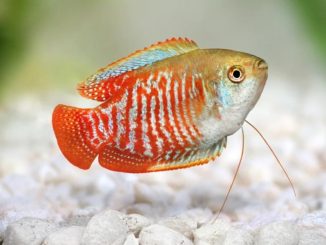
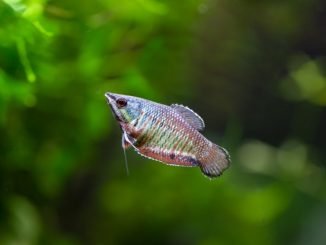
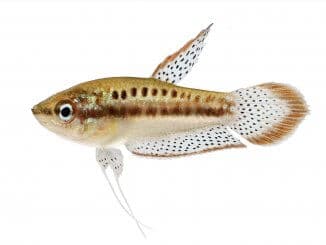
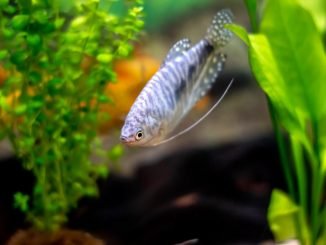
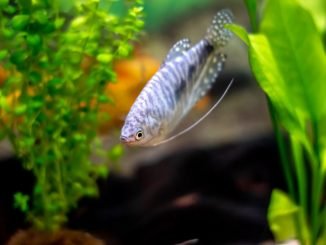
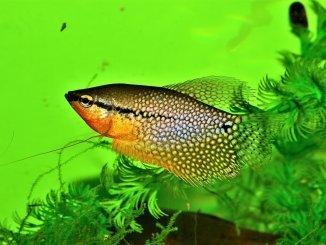
WRONG. My dwarf gourami has killed all 4 of my emerald cory catfish and constantly chases my tiger barb. He’s getting removed from my tank one way or another. Keep your receipts.
That is VERY unusual. These are peaceful fish with some being a little dominant but I’ve never seen them cause injury to another fish especially a Catfish, which would be essentially the same size. Personally I would humanely euthanize. I have a Danio (another peaceful fish) that him and probably another school mate killed 5 other danio. One ate the fins off of a Dwarf Gourami, since the other one died, the single one doesn’t seem capable of doing more damage – but no more danios with him. He schools with any group he can find but I’m not buying anything he might kill. This too is a very strange occurrence. I think some fish are possibly too in-bred and have issues with aggression or other problems. Clove oil is a kind Euthanasia, put some water in a bowl, put in a few drops until he is asleep then add a number of more drops until he passes away.
My favorite gourami is Colisa Labiosa, the very local gourami in Burma. Color growth throughout their life is such a wonderful thing. With their own personality and interesting behaviors, they let the aquarium become perfect.
I have two male dwarf gouramis in my tank. One is very docile and the other only chases other fish away from his area. The area he is protecting is a front corner of the tank. There are plants near it in the back but only one small plant in the area he really likes. Other then chasing the other gouramis around when they come into his area, he seems quite peaceful.
Red Fire Dwarf Gourami are stunning if you can find them. I would guess their care and disease risk is similar to the Dwarf Gourami.
All of the gourami species can be unpredictable in terms of getting along with each other. There are a few things that will usually work:
1) Tank must be large enough. I wouldn’t try housing multiple gouramis in anything less than a 29gal
2) Keep a planted tank or have lots of structures/hiding spots. These keep the line of sight broken and will keep fighting to a minimum. Plus, it gives the chased gourami a place to retreat to.
3) Don’t keep more than 1 male gourami in a tank unless you have lots of room. A general rule is one male and 2 or 3 female.
4) Keeping a school of lively fish like danios will help distract the gouramis and reduce fighting.
5) Make sure the multiple gouramis are close in size. If any are considerably smaller, they will undoubtedly get picked on.
I have more of a question. Which gourami is pink entirely? And then there were a couple that were white with red and blue ‘freckles.’ My neighbor used to have a big tank when I was a kid, later this summer I’m planning on a 40-50 gallon tank, and want to find them. Knowing the names would help.
I have 1 question. Female gourami was pregnant, i put male and female 2 weeks. But female haven’t given birth. Please help me
Thank you so much